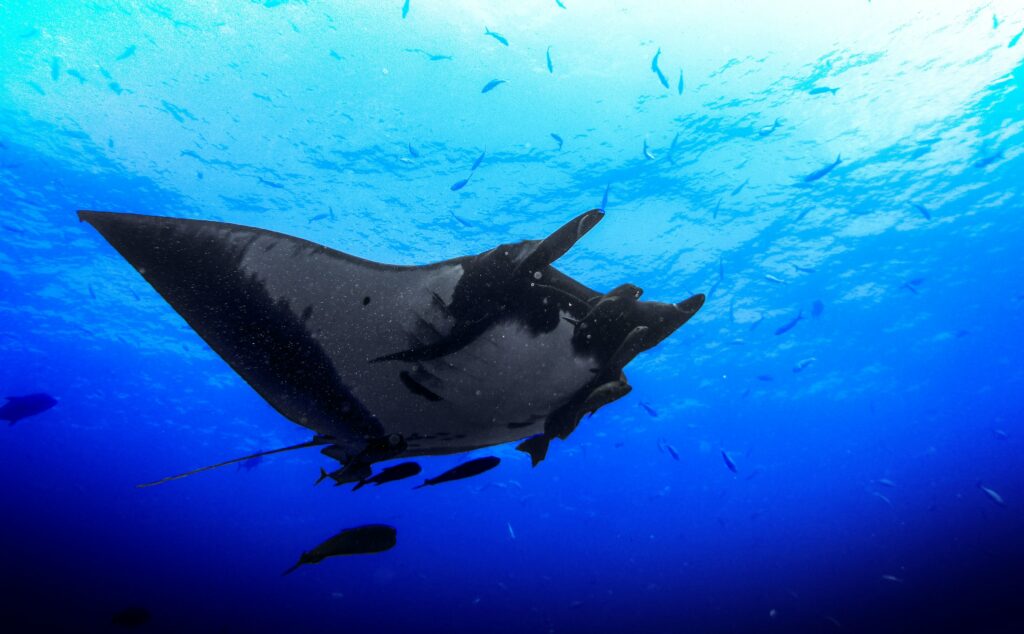Manta Ray Night Snorkel Tour Details
50 Minutes
After a quick 5-minute boat ride, you’ll spend 30-40 minutes in the water with the manta rays.
Snorkel Gear Included
We provide a snorkel, mask, and wetsuit. We recommend you arrive with your swimsuit on and bring a towel.
Refreshments
Enjoy complimentary nonalcoholic refreshments, including water and Hawaiian juices.
Small Groups
Our US Coast Guard certified vessel delivers a small group experience with a maximum of 11 passengers.
Manta Ray Night Snorkel Availability
FAQ
Manta Rays appear for our tours roughly 92% of the time. While we expect to see manta rays every night, they are wild animals, and we do not see them roughly 8% of the time.
If you do not see at least 1 manta ray, we will offer you a free trip on any tour with availability. Our tours typically sell out several days in advance, so we recommend booking your manta ray tour at the beginning of your stay on Hawaii Island.
The main difference between the tours is light. The earliest tour goes out before sunset, and you enter the water when it’s light out. The later tours go out in the dark, and you enter the water when it’s dark out.
If you love our Kona sunsets, you may find the earliest tour to be the best option.
If you love a thrill, you might find excitement in boarding a boat and entering the water when it’s pitch black.
The likelihood of seeing manta rays is similar for the earlier and later tours, which is about 92%. We’ve seen the manta rays show up after the earliest tour has ended, and we’ve seen manta rays leave before the later tours have started.
If you’re not a strong swimmer, we recommend the earliest tour. We’ve seen non-swimmers struggle to adapt to snorkeling in the dark, as it introduces a new element to overcome.
No, manta rays are not dangerous. They do not have barbs or stingers, so they can’t sting you.
Manta rays eat plankton.
Members of the Kona community have formed a symbiotic relationship with Kona’s wild manta rays, where the community brings lights that attract plankton for the manta rays to eat, and the manta rays perform an incredible nighttime performance that resembles choreographed ballet.
We meet our guests near the boat ramp at the Keauhou Harbor, located at 78-7130 Kaleiopapa St, Kailua-Kona, HI 96740.
Click Here to view the location on a map.
Please arrive 30 minutes before your scheduled time of departure. We will check you in, get you fitted for a wetsuit (optional), and bring you to the boat at the time of departure.
Please note that our Manta Magic start times change throughout the year, depending on the sunset time.
We recommend you bring a towel and light coverup or jacket for the boat ride back to the harbor.
This tour is appropriate for people aged 7 to 70. Children 7 and older are welcome on the tour if they can comfortably swim 25 yards in the ocean.
Every person on the boat needs a ticket, regardless of age or size. Our boat is certified by the US Coast Guard for 12 passengers, and we can not exceed this limit.
Yes, you may purchase a ticket and ride along.
Every person on the boat needs a ticket, regardless of whether they are getting in the water. Our boat is certified by the US Coast Guard for 12 passengers, and we can not exceed this limit.
If you can comfortably swim 25 yards in the ocean, you will be able to safely enjoy our snorkel tours.
For safety purposes, if you can not comfortably swim 25 yards in the ocean, we ask that you purchase a ticket to ride along on the boat, but not enter the water.
You may cancel your trip up until 24 hours before your departure time, for a full refund.
Yes, we require a minimum of 6 guests to run each tour. If your tour has less than 6 total confirmed guests, you will be rebooked to a different tour or issued a refund. You may also have the opportunity to pay for 6 total seats and get a private charter at a significant discount.
We're proud to be on the green list.
Click Here to learn more about the Manta Ray Advocates green list.
Additional Information
Check In
Please arrive 30 minutes prior to your scheduled time of departure. You will be checked in and fitted for a wetsuit prior to boarding the boat.
When you arrive at Keauhou Harbor, look for our white van with lights on top. We will be parked near the boat ramp. If you do not immediately see us, please call 808-209-9680.
At the time of departure, we will guide you to the boat ramp, where Pueo Kai 2, our 27′ Force Marine, will be waiting.
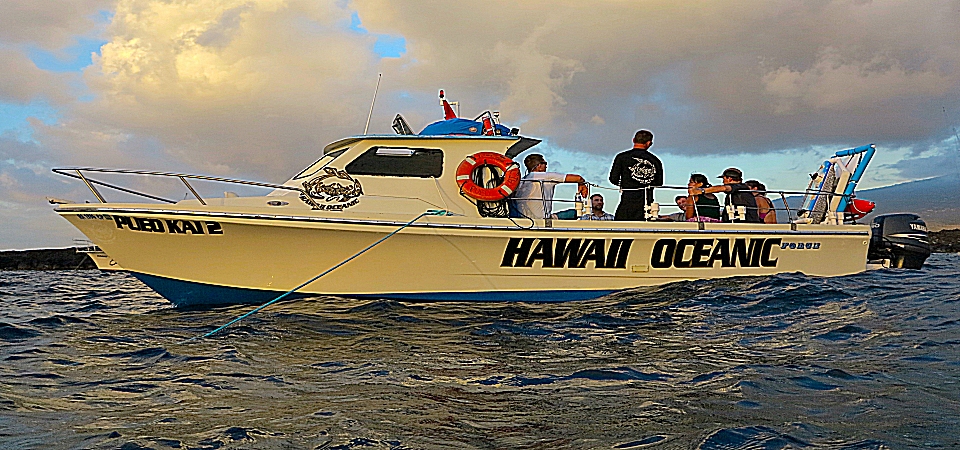
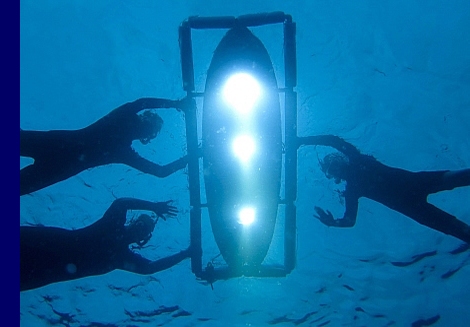
The Tour
After a quick 5-minute boat ride, we’ll arrive at the aptly named “Manta Village.”
You’ll enter the water as Kona’s famous manta rays feed on plankton accumulating under our light boards. After 30-45 minutes in the water, depending on sea conditions and manta ray feeding behavior, you will be guided back to the boat.
After a quick 5-minute boat ride back to the harbor, you’ll arrive at the dock and walk away with an unforgettable experience.
The Green Flash At Sunset
The earliest tour goes out before the sun sets, as guests enjoy a front-row seat to one of Kona’s spectacular sunsets.
On a clear evening, you might even be lucky enough to catch a green flash at sunset, an atmospheric phenomenon in which the sun flashes a small neon green glow as it dips below the horizon. Truly a unique sight to see!
Hawaii is said to be amongst the best locales for seeing the green flash. The green flash, if it is seen ….is only visible for a brief moment. How best to catch that elusive green flash at sunset? Being in a boat on the water is said to be the best place to be in order to see the green flash at sunset.
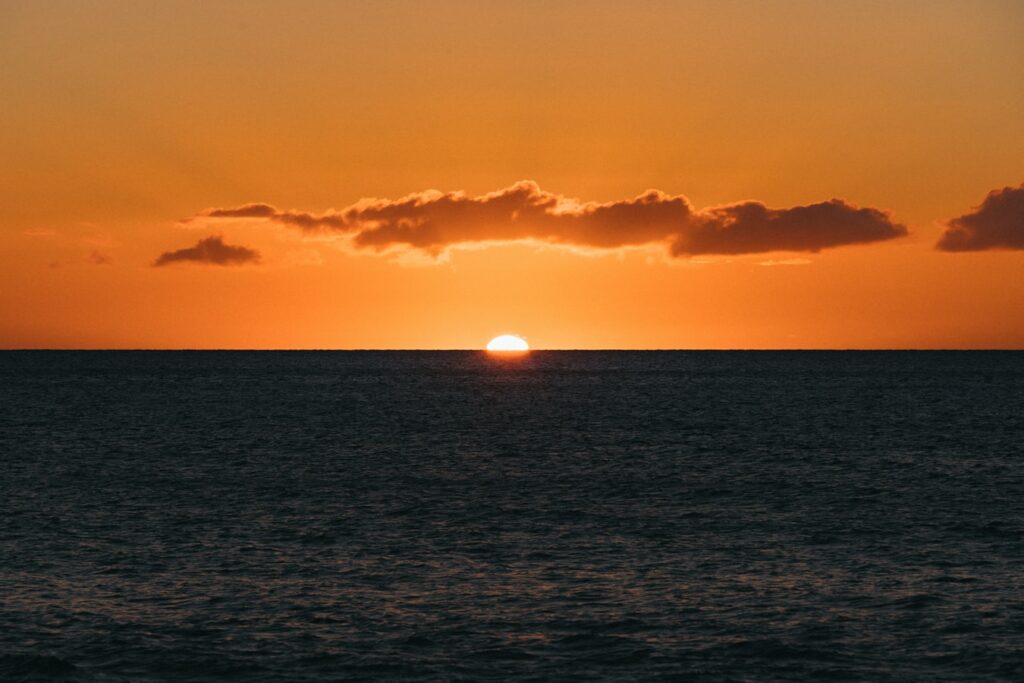
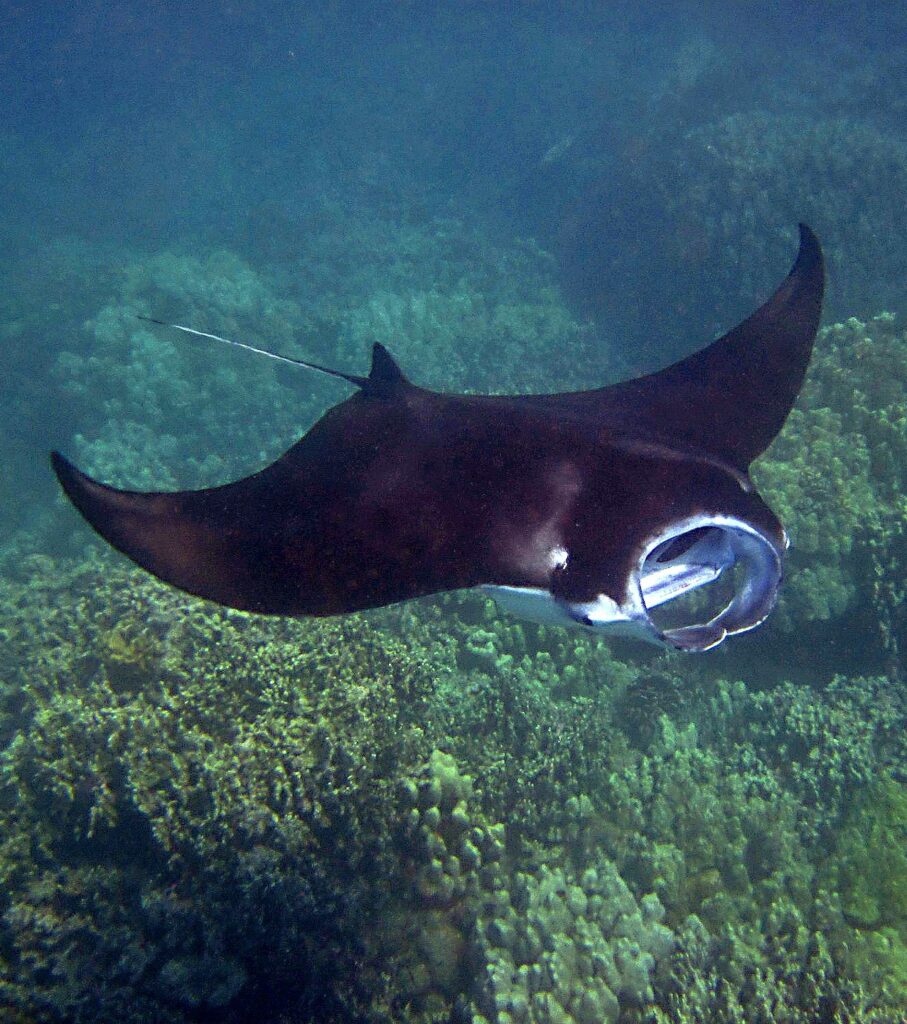
Kona’s Manta Rays Are Unique
Manta rays (Manta alfredi) are large, cartilaginous fish found in the same class as sharks, skates and other rays (Chondrichthyes).
Manta rays are distributed throughout the tropical Pacific, but their location is typically unpredictable due to their migratory nature. Our Hawaiian manta rays are unique because they tend to be non-migratory, and are found in individual populations along shallow reef coastlines. Because they are non-migratory, manta rays in Hawaii return to the same feeding locations regularly, which allows for a unique tour with a 92% success rate for seeing manta rays.
Our Kona coast manta ray population has been regularly observed by the scientific community for several decades, and for several centuries by the ancient Hawaiians.
Manta Rays Are Gentle Giants
Despite being related to some fierce predatory fish and dangerous stingrays, manta rays are gentle giants with no teeth or barbs on their tails. Manta rays do not have a single bone in their body!
Because manta rays are mostly cartilage and muscle, manta rays are very heavy, strong animals. Manta rays grow quite large, ranging from 6 feet across and 600 pounds (~ 1.5 meters and ~ 272 kilos) all the way up to 16 feet and 1600 pounds (~ 5 meters and ~726 kilos).
Female manta rays are much larger than male manta rays. Female manta rays give birth to a very large baby; a baby newborn manta ray has about a 4-foot wingspan.
Although mantas are one of the largest fish in the ocean, manta rays are filter feeders who dine on one of the smallest things in the ocean, plankton.
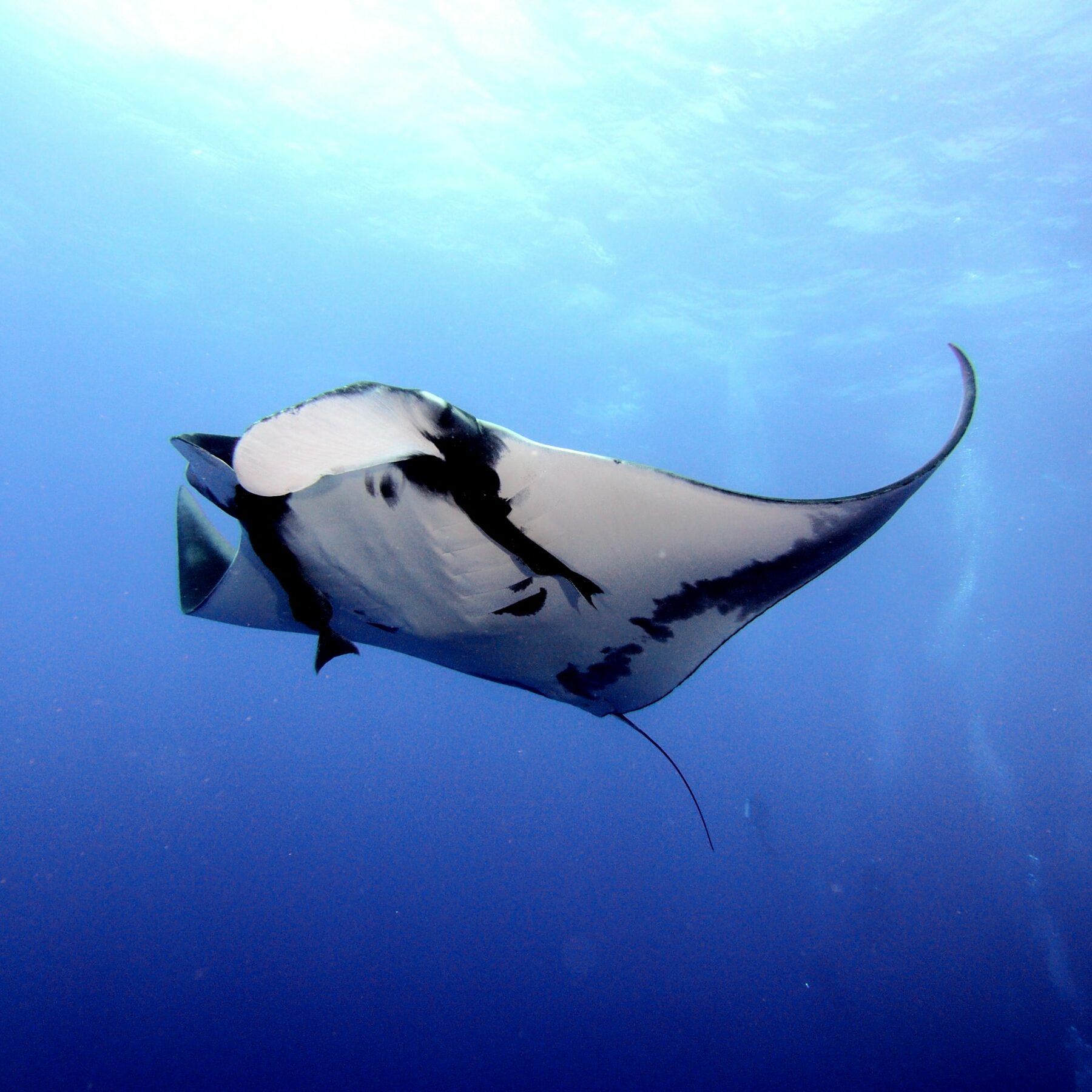
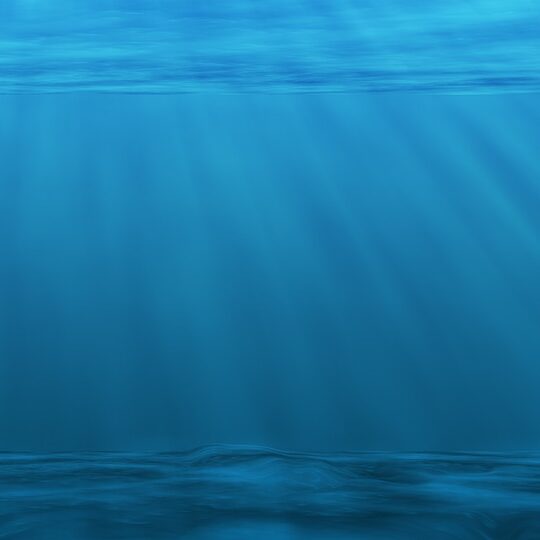
Plankton Facts
Plankton (Greek for “drifter”) is a mixture of very small plants and animals that drift with the ocean currents.
The plankton that live nearest to the surface of the ocean are called phytoplankton. Phytoplankton use the sunlight in combination with the nutrients in the water to photosynthesize their own food.
The phytoplankton gather together in large numbers at the sea surface during the day and are believed to be the source of at least half of the world’s oxygen.
These large numbers of phytoplankton at the sea surface creates a plankton soup from which the manta rays can feed upon during the day, with manta rays graze along the sea surface to filter out hundreds of pounds of plankton per day.
Viewing Manta Rays At Night
The Kona manta ray population has adapted their very own special feeding behavior that sets the Kona manta ray apart from manta rays found around the world.
This feeding behavior started in the late 1970s when a Kona Hawaiian hotel used powerful floodlights to illuminate the surf zone of their seaside restaurant.
Those lights, left on every night, attracted large amounts of plankton. The scattered plankton swarmed the lights by the restaurant, trying to photosynthesize.
One fateful night in 1979, a single manta ray followed a current line to find the accumulated plankton by the hotel. The lucky manta ray found a feast of plankton corralled in one spot which provided a quick and easy meal. Thus, the manta ray night encounter was born.
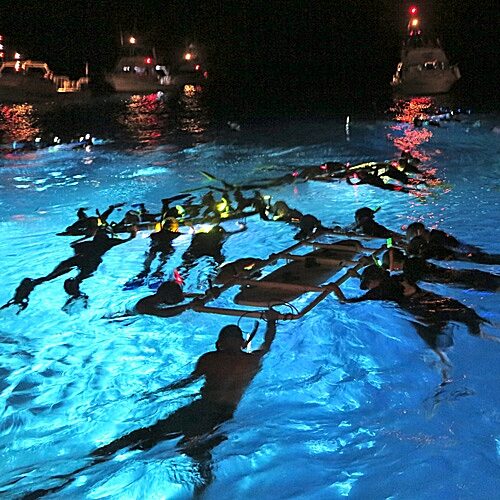
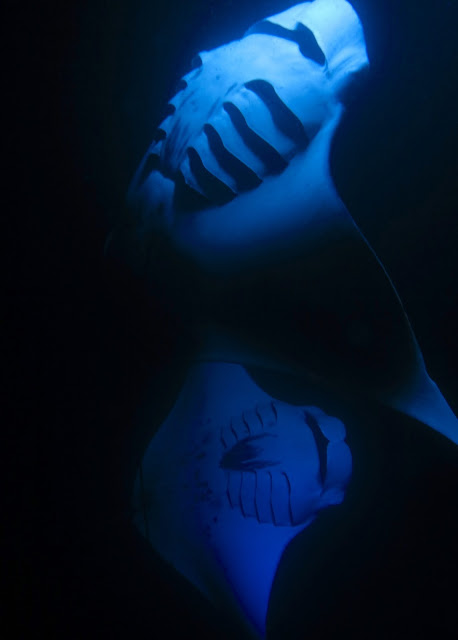
It’s All About The Light
For over 40 years, manta rays have learned that light at night means food at night, and they have been seen at two different sites in Kona almost every night (about 92% of the time).
As you head out to Manta Village, your swim guide will provide more information about the manta ray snorkel experience. The lightboard is set up in the water with handles that you grip while floating gently, observing the mantas through your mask as they glide through the water feeding on the plankton below.
The light board in the water attracts the plankton, which in turn attracts the manta rays.
And, then… the magical experience begins.
The manta rays have learned that the light boards in the water mean food, and the manta rays will swoop within inches of your face as you lay flat at the sea surface.
We call this behavior the “barrel roll” when a manta ray does a lazy cartwheel just below the light board.
Likely To Sell Out
Reserve Your Seat Today
